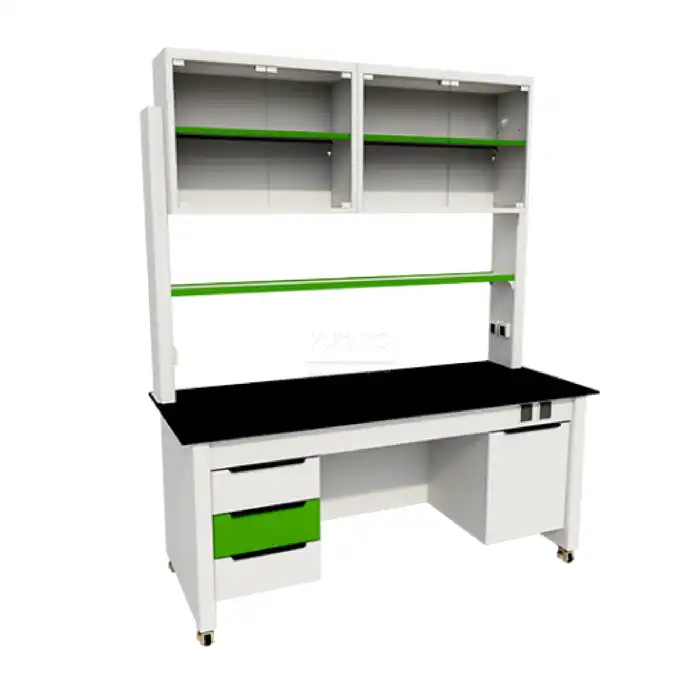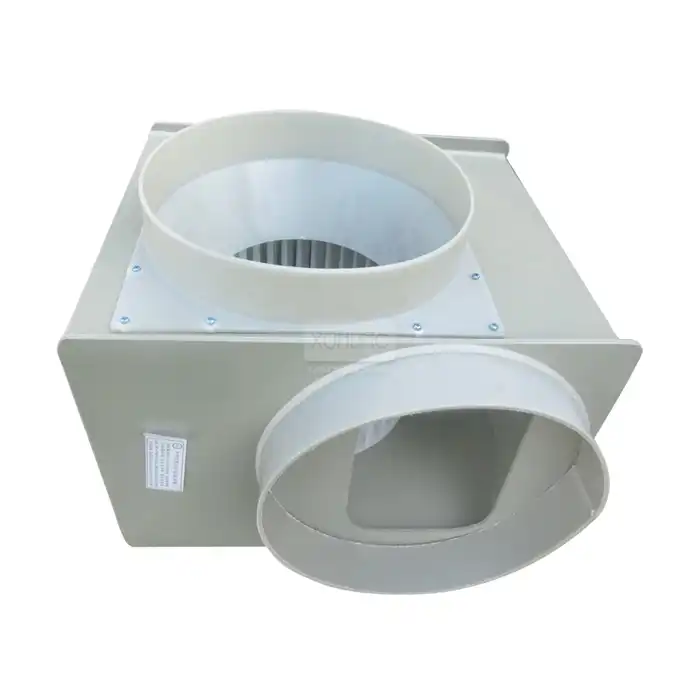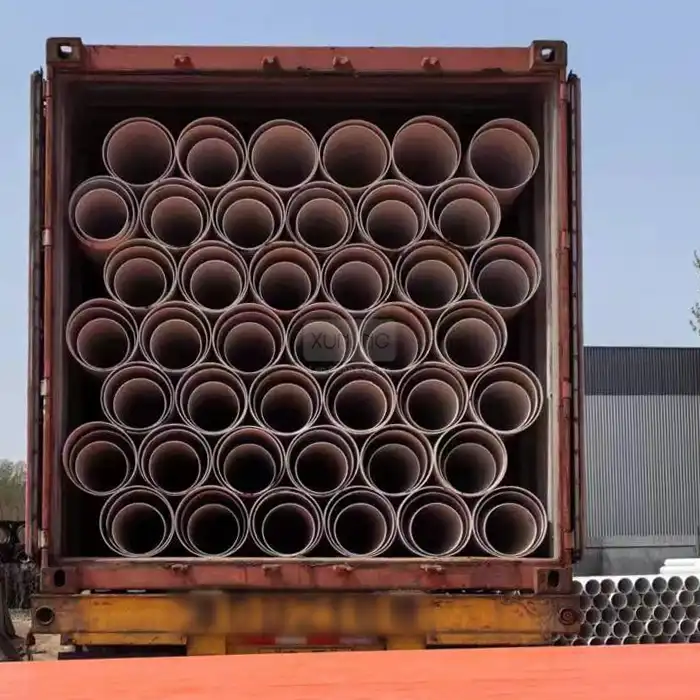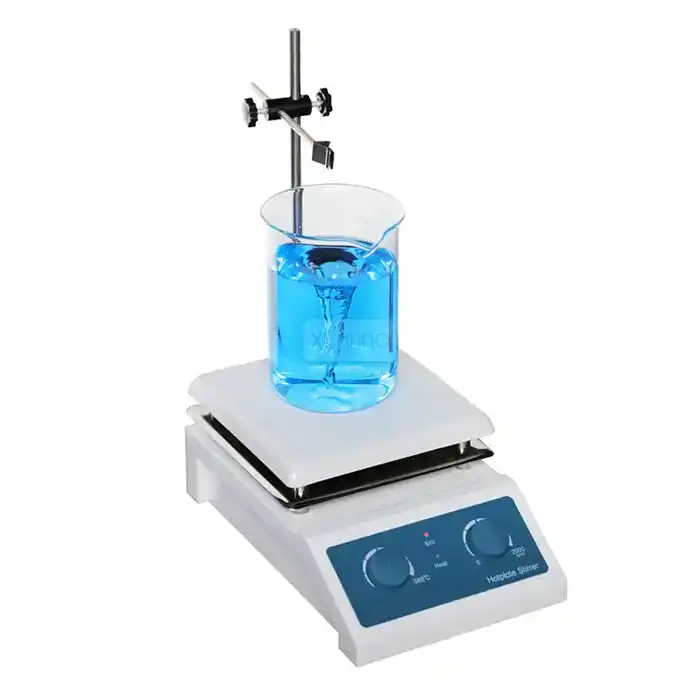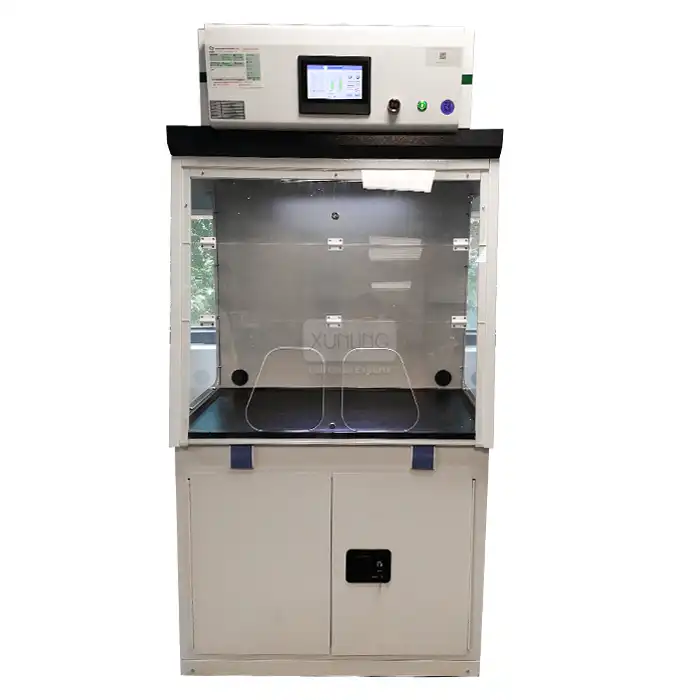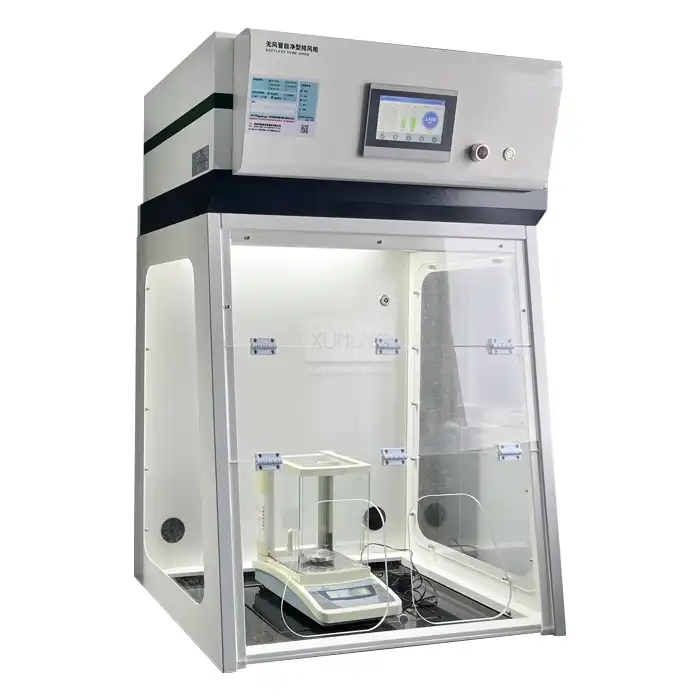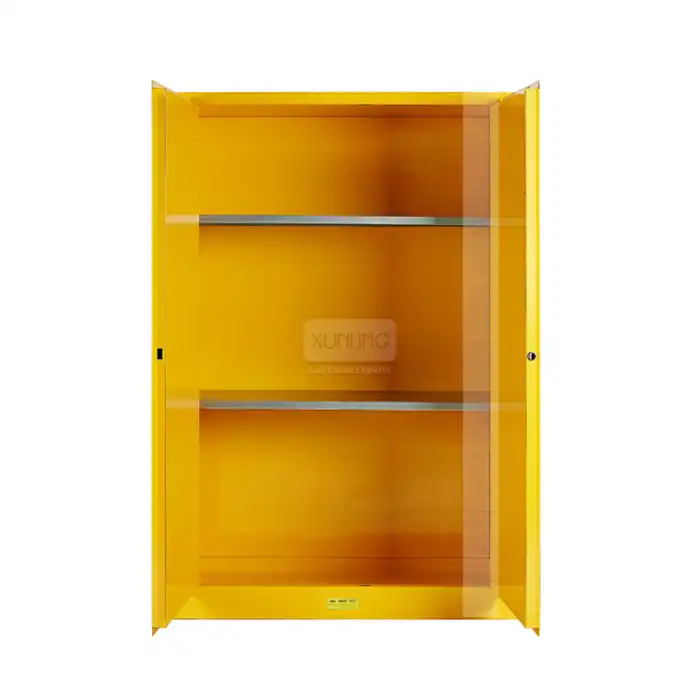
When should I use a chemical vent hood?
2025-07-03 16:40:58
Laboratory safety is paramount in any scientific or industrial setting where chemicals are handled. Among the most critical safety equipment is the chemical vent hood, an engineered control system designed to protect laboratory personnel from harmful exposure to hazardous chemicals and vapors. Understanding when to use a chemical vent hood is essential for maintaining a safe working environment and ensuring compliance with safety regulations.
A chemical vent hood should be used whenever working with volatile, toxic, or odorous chemicals that could release harmful vapors, fumes, or aerosols into the laboratory environment. These specialized ventilation systems are designed to capture, contain, and remove airborne contaminants, preventing them from spreading throughout the workspace. Chemical vent hoods are particularly necessary when handling substances that pose inhalation hazards, present fire risks, or can cause respiratory irritation. By creating a physical barrier between the user and hazardous materials, chemical vent hoods serve as the first line of defense against chemical exposure in laboratory settings.
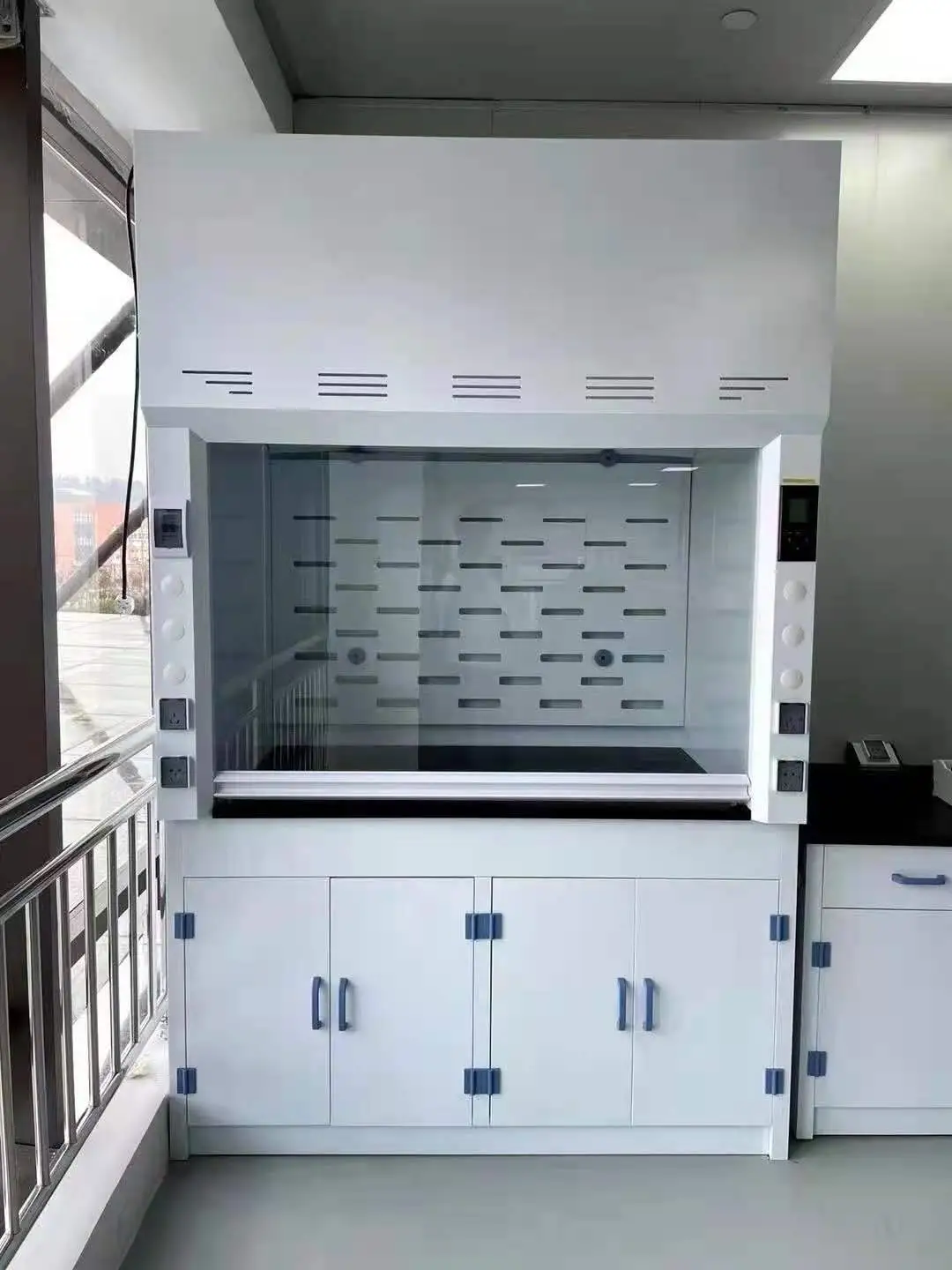
Types of Chemical Operations Requiring Vent Hoods
Understanding the specific laboratory operations that necessitate the use of chemical vent hoods is crucial for laboratory safety planning and protocol development.
Handling Volatile Organic Compounds (VOCs)
Volatile Organic Compounds represent one of the most common hazards in laboratory environments that require the use of chemical vent hoods. These compounds readily evaporate at room temperature, creating potentially dangerous vapors that can be inhaled by laboratory personnel. Examples include common solvents like acetone, benzene, toluene, xylene, and various alcohols used in extraction and purification processes. When working with VOCs, the chemical vent hood creates a controlled environment where vapors are immediately captured and extracted from the workspace. The directional airflow moves contaminated air away from the user's breathing zone and exhausts it outside the building through appropriate filtration systems. Modern chemical vent hoods are equipped with face velocity monitors that ensure proper airflow rates (typically 80-120 feet per minute) to effectively contain vapors without creating turbulence that might affect experiment precision or pull vapors back toward the user. Without this protection, exposure to VOCs can lead to both acute symptoms like headaches, dizziness, and eye irritation, and chronic health issues including liver damage, nervous system effects, and even cancer with prolonged exposure.
Working with Corrosive Substances
Corrosive chemicals, including strong acids (hydrochloric, sulfuric, nitric) and bases (sodium hydroxide, potassium hydroxide), represent significant hazards in laboratory settings that absolutely necessitate the use of chemical vent hoods. These substances not only present risks of chemical burns upon contact with skin or eyes but also release corrosive vapors that can damage the respiratory tract if inhaled. The chemical vent hood provides crucial protection when working with corrosives by containing and removing these harmful vapors. When handling particularly aggressive corrosives, specialized acid-resistant vent hoods may be employed, featuring materials like polypropylene or PVC that resist chemical attack. The hood's continuous airflow ensures that corrosive vapors are constantly drawn away from the user, protecting not only the person working directly with the chemicals but also others in the laboratory. Additionally, many chemical vent hoods designed for corrosive work incorporate wash-down systems and specialized drainage to safely manage spills. Laboratory protocols typically require that all operations involving concentrated acids or bases, particularly those that might generate heat or gas during reactions or dilutions, be performed exclusively within a properly functioning chemical vent hood with the sash positioned at the optimal height for both protection and visibility.
Performing Chemical Reactions with Hazardous Byproducts
Chemical reactions that produce hazardous byproducts, such as toxic gases, vapors, or aerosols, must always be conducted within the controlled environment of a chemical vent hood. Examples include reactions that generate hydrogen sulfide, hydrogen cyanide, chlorine gas, nitrogen oxides, or other harmful substances that could quickly reach dangerous concentrations in enclosed laboratory spaces. The chemical vent hood serves as a critical engineering control for these operations, creating a negative pressure environment that prevents the escape of hazardous byproducts into the broader laboratory space. For particularly dangerous reactions, specialized vent hoods with enhanced containment features may be employed, such as those with auxiliary air supply systems or those designed with deeper depths to provide greater distance between the reaction and the user. Modern chemical vent hoods also frequently incorporate safety features like airflow monitors and alarms that immediately alert users if containment is compromised. Additionally, many institutions implement standard operating procedures requiring risk assessments before conducting reactions with potentially hazardous byproducts, which include verification of proper chemical vent hood function and the preparation of contingency plans. These comprehensive approaches ensure that even when working with reactions that generate dangerous substances, laboratory personnel remain protected by the effective containment and removal capabilities of properly maintained and operated chemical vent hoods.
Selecting the Right Chemical Vent Hood for Your Application
Choosing the appropriate chemical vent hood is crucial for ensuring effective protection and optimal performance in specific laboratory applications.
Standard vs. Specialized Chemical Vent Hoods
When determining the appropriate chemical vent hood for laboratory applications, understanding the distinction between standard and specialized options is essential for safety and efficiency. Standard chemical vent hoods, often referred to as conventional or benchtop hoods, are designed for general chemical work and typically feature a vertical sash, baffle system, and airfoil. These versatile units accommodate most routine laboratory procedures involving common chemicals and provide reliable protection for everyday applications. However, specialized chemical vent hoods are engineered to address specific challenges that standard models cannot adequately handle. For instance, perchloric acid hoods are constructed with wash-down systems and specialized materials to prevent the accumulation of potentially explosive perchlorate salts. Radioisotope hoods incorporate seamless, non-porous surfaces for easy decontamination and may include HEPA filtration for particulate control. High-performance low-flow hoods utilize advanced aerodynamic designs to maintain containment while reducing energy consumption by up to 70% compared to conventional models. When selecting between standard and specialized chemical vent hoods, laboratories must conduct thorough risk assessments considering the specific chemicals to be handled, required containment levels, and frequency of use. Additionally, considerations should include laboratory spatial constraints, energy efficiency goals, and integration with existing building ventilation systems. Making the correct selection ensures not only regulatory compliance but also optimizes both user protection and operational efficiency, making it a critical decision in laboratory design and safety planning.
Ductless vs. Ducted Chemical Vent Hood Systems
The choice between ductless and ducted chemical vent hood systems represents a significant decision in laboratory design that impacts safety, functionality, and facility infrastructure requirements. Ducted chemical vent hoods, considered the traditional gold standard for laboratory ventilation, exhaust contaminated air outside the building through dedicated ductwork. This design provides superior protection when handling a broad spectrum of hazardous substances and high volumes of chemicals, as it completely removes contaminants from the indoor environment. In contrast, ductless chemical vent hoods utilize sophisticated filtration technology—typically a combination of HEPA filters and activated carbon—to clean the air before recirculating it back into the laboratory. These self-contained units offer significant advantages including energy efficiency (no conditioned air is exhausted outside), flexibility in laboratory layout (no connection to building exhaust systems required), and substantially lower installation costs. However, ductless systems have important limitations: filters require regular maintenance and replacement, chemical usage must be carefully monitored to prevent filter saturation, and certain highly hazardous or unknown substances cannot be safely handled in these systems. The decision between these technologies should be based on a comprehensive assessment including the specific chemicals to be used, usage patterns, laboratory space constraints, building infrastructure, energy conservation goals, and long-term operational costs. Many modern laboratories implement a hybrid approach, utilizing ducted systems for high-hazard applications and ductless units for lower-risk procedures, thereby optimizing both safety and efficiency across different laboratory operations. Regardless of the system selected, proper certification, regular performance testing, and adherence to manufacturer guidelines for chemical vent hood operation remain essential for maintaining a safe working environment.
Size and Configuration Considerations
Selecting the appropriate size and configuration of a chemical vent hood is a critical decision that directly impacts both safety performance and workflow efficiency in laboratory environments. The working width of chemical vent hoods typically ranges from 3 to 8 feet, with depth and height variables that must be carefully matched to the specific applications and spatial requirements of the laboratory. When determining the optimal size for a chemical vent hood, several key factors must be evaluated comprehensively. First, the scale and nature of the intended operations must be considered—larger apparatus setups, multiple simultaneous reactions, or equipment that generates significant heat may require wider or deeper hoods to maintain proper containment. Second, the specific types of chemicals used influence size selection; highly toxic or volatile substances may warrant greater working distances between the hazard source and the hood face. Additionally, laboratory space constraints must be balanced against safety requirements, as oversized hoods consume valuable floor space while undersized units may compromise protection. Modern chemical vent hood designs incorporate numerous configuration options to address these various needs, including adjustable or combination sash systems (vertical, horizontal, or combination), adaptable internal fixtures (electrical outlets, service fixtures, lighting), and specialized airflow patterns optimized for particular applications. For instance, high-performance low-flow hoods utilize advanced aerodynamics to maintain protection while reducing face sizes and energy consumption. Accessory considerations such as base cabinets, support stands, and integration with surrounding casework further customize the hood installation to specific laboratory requirements. Properly sizing and configuring a chemical vent hood involves careful evaluation of these factors, often requiring consultation with safety professionals, facilities engineers, and experienced hood manufacturers like Xi'an Xunling Electronic Technology Co., Ltd. to ensure that the final installation provides optimal protection while supporting efficient laboratory operations.
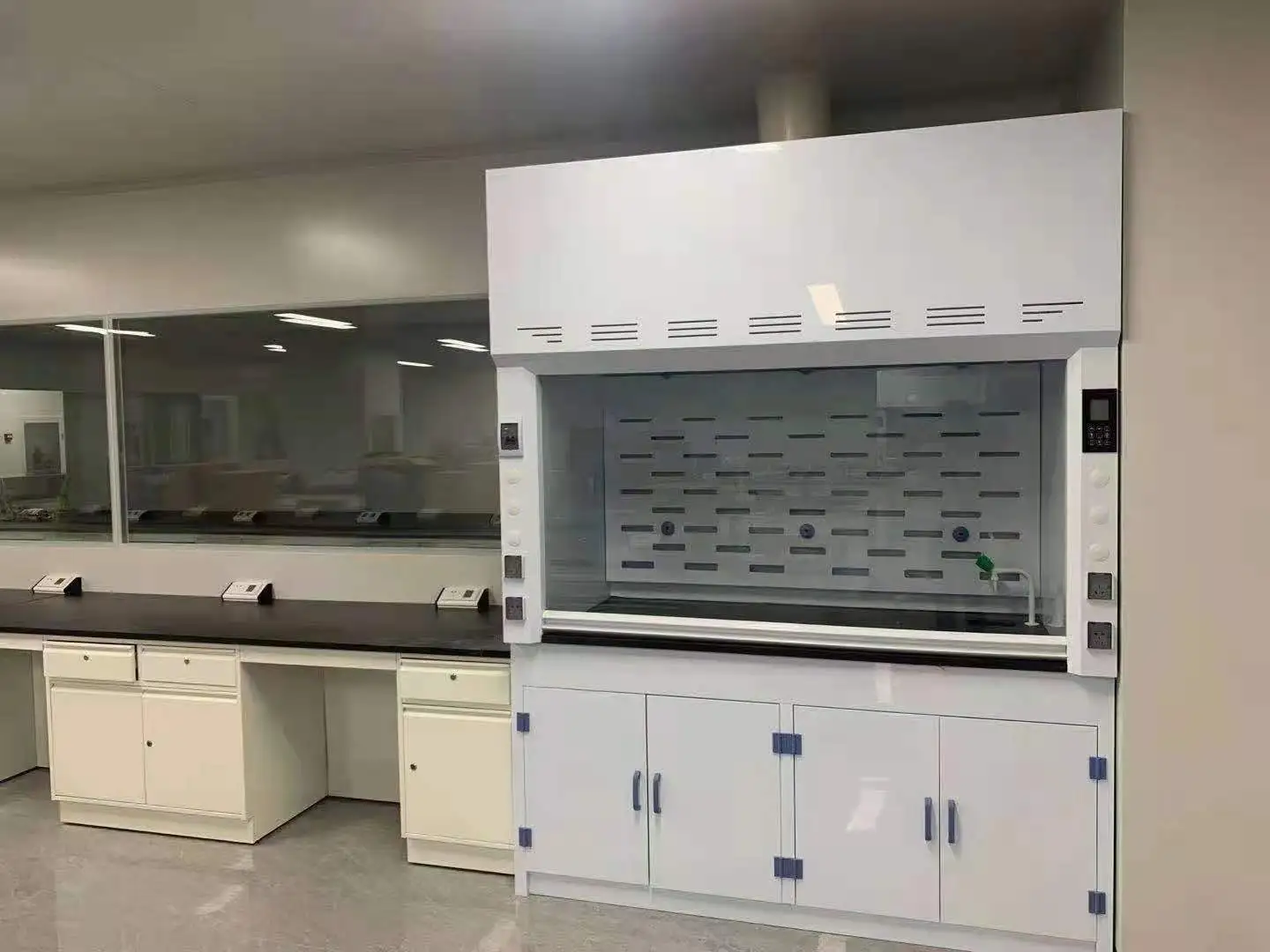
Proper Usage and Maintenance of Chemical Vent Hoods
Ensuring the continuous effectiveness of chemical vent hoods requires proper usage protocols and regular maintenance.
Operating Procedures for Maximum Safety
Implementing proper operating procedures for chemical vent hoods is essential for ensuring maximum safety and effective containment of hazardous substances in laboratory environments. The foundation of safe operation begins before work even starts, with a thorough pre-use inspection to verify proper airflow (using airflow indicators or monitors), check for obstructions, and ensure all components are functioning correctly. Once operation begins, the sash position becomes critically important—it should be maintained at the designated operating height (typically marked on the frame) to optimize face velocity and containment while providing a physical barrier between the user and potential hazards. Work practices within the chemical vent hood significantly impact performance. All operations should be conducted at least 6 inches inside the hood face to prevent vapor escape, and equipment should be elevated on stands to allow airflow underneath. Heat-generating devices should be placed toward the rear of the hood to prevent thermal currents from disrupting the containment barrier. Laboratory personnel must avoid rapid movements that could create air turbulence and potentially pull contaminants out of the hood. Additionally, the user's body position is crucial—one should avoid placing their head inside the hood or blocking the face opening with their body. Material storage within chemical vent hoods should be minimized as clutter can disrupt airflow patterns and reduce containment efficiency. For particularly hazardous procedures, additional precautions may include using secondary containment trays, positioning the sash at its lowest practical height, and employing splash shields. Comprehensive training programs should ensure that all users understand these operating principles, recognize the limitations of chemical vent hoods (they do not protect against explosions, for example), and know how to respond to emergency situations such as power outages or hood failures. By adhering to these detailed operating procedures, laboratories can maximize the protective capabilities of their chemical vent hoods and significantly reduce the risk of chemical exposure to personnel.
Regular Testing and Certification Requirements
Regular testing and certification of chemical vent hoods is not merely a regulatory requirement but a fundamental safety practice that ensures these critical engineering controls continue to provide adequate protection for laboratory personnel. Industry standards, including those established by organizations like ANSI/ASHRAE and OSHA, generally recommend that chemical vent hoods undergo comprehensive performance testing at least annually, with more frequent testing in high-use or critical applications. The testing protocol for chemical vent hoods encompasses multiple performance parameters that collectively determine containment effectiveness. Face velocity measurements, typically taken at multiple points across the hood opening, verify that air movement meets the specified range (usually 80-120 feet per minute) necessary for proper containment. Smoke visualization tests provide qualitative evidence of containment by revealing airflow patterns and potential turbulence issues that might compromise safety. Tracer gas containment testing, the most rigorous evaluation method, quantitatively measures the hood's ability to prevent contaminant release under controlled conditions. Modern certifications also include evaluations of lighting levels, noise generation, and sash operation to ensure overall functionality. After testing, comprehensive documentation should be generated, including a clearly visible certification label applied to the hood indicating the test date, results, and next certification deadline. Any chemical vent hood failing to meet performance criteria must be immediately removed from service until repairs or adjustments restore proper function. Beyond scheduled certifications, certain events should trigger additional testing, including significant changes to the laboratory ventilation system, hood relocation, major repairs, or reported performance concerns from users. These rigorous testing and certification procedures ensure that chemical vent hoods maintain their critical safety function throughout their operational life, providing reliable protection against chemical exposure hazards in laboratory environments.
Troubleshooting Common Performance Issues
Recognizing and resolving common performance issues with chemical vent hoods is essential for maintaining continuous protection in laboratory environments. Face velocity problems—either insufficient or excessive airflow—represent one of the most frequent concerns affecting hood performance. Insufficient face velocity may result from mechanical issues like fan belt slippage, filter clogging, or duct obstructions, while excessive velocity can create turbulence that compromises containment at the hood face. Advanced troubleshooting may require anemometer measurements at multiple points to create a comprehensive velocity profile and identify specific problem areas. Containment failures, often detected through smoke visualization tests or user observations of odors escaping the hood, can stem from various sources including improper sash positioning, excessive equipment blocking airflow paths, or external air disturbances from nearby doors, windows, or HVAC diffusers. Cross-drafts exceeding 50% of the hood's face velocity can significantly compromise containment ability. Resolving these issues may require adjustments to room air supply locations, installation of air foils or directional vanes, or reconfiguration of laboratory traffic patterns to minimize disruptions. Mechanical issues like unusual noise, vibration, or inconsistent performance often indicate underlying problems with exhaust fans, motors, or control systems. Diagnostic approaches include inspecting belts for wear or misalignment, checking damper positions, and verifying that variable air volume (VAV) systems are responding correctly to sash position changes. Modern chemical vent hoods increasingly incorporate sophisticated electronic monitoring systems that can facilitate rapid identification of specific performance issues through real-time airflow measurements, pressure differential monitoring, and automated alarm functions. Establishing a systematic approach to troubleshooting—beginning with simple visual inspections and progressing to more technical measurements as needed—enables laboratory managers to quickly identify and resolve performance issues before they compromise safety. When internal troubleshooting fails to resolve persistent problems, consultation with specialized hood service technicians from companies like Xi'an Xunling Electronic Technology Co., Ltd. can provide the expertise needed to address complex performance issues and restore optimal chemical vent hood function.
Conclusion
Chemical vent hoods are indispensable safety equipment for laboratories handling hazardous substances. They should be used whenever working with volatile, toxic, or corrosive chemicals that release harmful vapors. Proper selection, usage, and maintenance of these systems are crucial for protecting laboratory personnel from potential health hazards. By understanding when and how to use chemical vent hoods effectively, laboratories can maintain safe working environments while complying with industry safety standards.
Looking to enhance your laboratory safety with high-quality chemical vent hoods? Xi'an Xunling Electronic Technology Co., Ltd. offers cost-effective, reliable, and user-friendly solutions tailored to your specific needs. Our comprehensive service includes 5-day delivery, 5-year warranty, custom design options, and exceptional after-sales support. Don't compromise on laboratory safety—contact our expert team today to discover how our OEM capabilities can provide you with the perfect chemical vent hood solution for your facility. Take the first step toward a safer laboratory environment by emailing us at xalabfurniture@163.com.
References
1. American Chemical Society. (2022). Laboratory Ventilation and Chemical Hood Guidelines: Best Practices for Safety and Sustainability. ACS Publications.
2. National Research Council. (2023). Prudent Practices in the Laboratory: Handling and Management of Chemical Hazards. National Academies Press.
3. Occupation Safety and Health Administration. (2024). Laboratory Safety Guidance: Chemical Fume Hood Requirements and Testing Protocols. OSHA Publications.
4. Katz, M. E., & Steinberg, H. L. (2023). Chemical Laboratory Safety and Security: A Guide to Developing Safety Systems in Modern Laboratories. CRC Press.
5. World Health Organization. (2024). Laboratory Biosafety Manual: Principles and Practices for Safe Chemical Handling. WHO Press.
6. Environmental Protection Agency. (2024). Green Chemistry in the Laboratory: Sustainable Practices and Safety Control Measures. EPA Publications.







